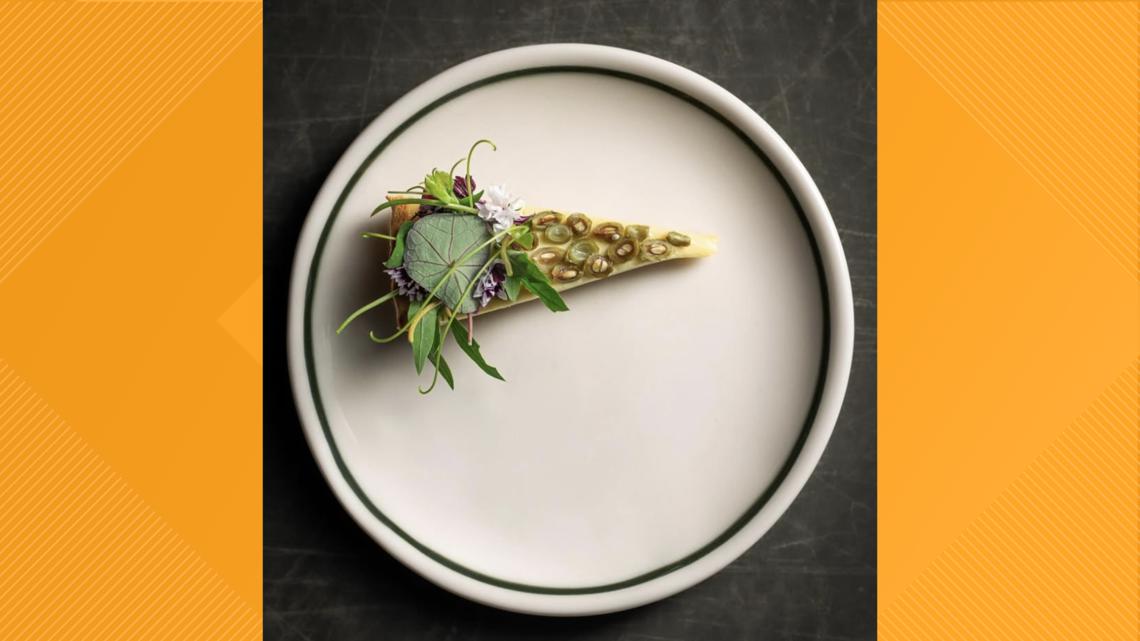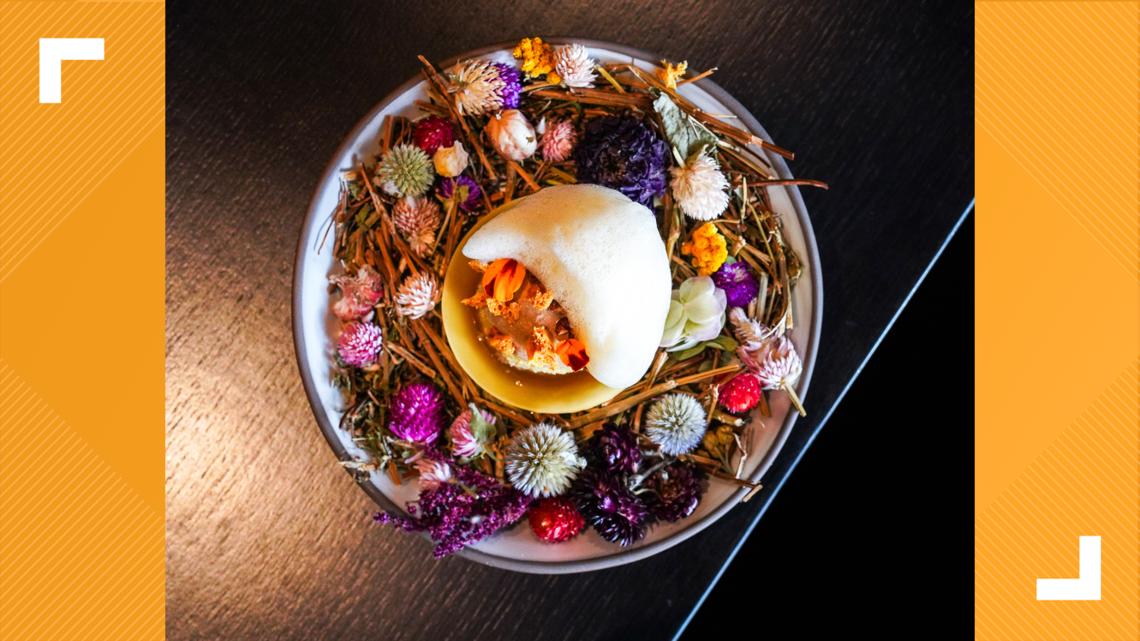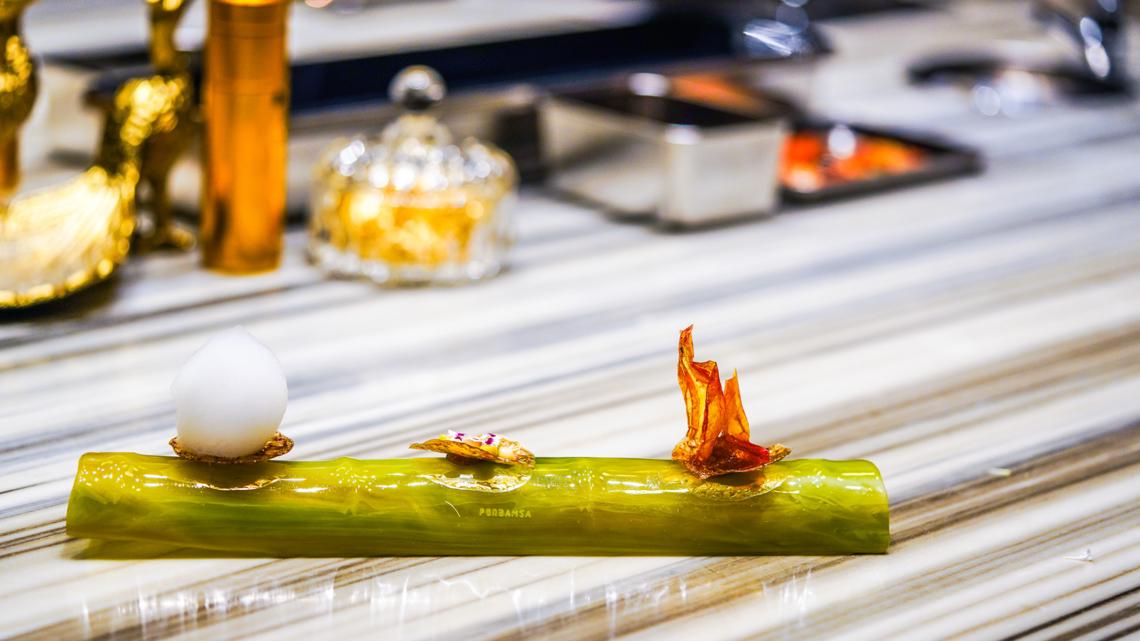The Pearl district was well represented as San Antonio tripled its number of Michelin Star-designated restaurants.
SAN ANTONIO — A fresh-faced new Pearl restaurant and a no-photos-allowed dessert bar have joined the Southtown culinary mecca Mixtli to embody San Antonio’s three-course menu of Michelin Star restaurants indicating high-quality cooking.
The 2025 edition of the international restaurant tastemaker’s Texas guide was revealed Tuesday evening in Houston. Just three new Michelin Star restaurants were announced, two of which are in the Alamo City: Isidore and Nicosi Desert Bar, both located in the Pearl district. Joining them in the prestigious tier of one-star eateries is Dallas’ Mamani, a French contemporary spot.
The announcement brings San Antonio – one of just two U.S. cities with a UNESCO Creative City of Gastronomy designation – closer to the level of Houston and Austin, which boast seven and five Michelin Star restaurants, respectively. There are 16 in all of Texas, though for the second year in a row no restaurants in the Lone Star State, whether it’s a barbecue joint or specialized bistro, rose to the level of the more elite levels of two or three stars.
Fewer than 50 restaurants in the U.S. have made Michelin judges salivate to that extent.
Isidore, which opened in August 2024 and focuses on Texas dishes, was recently hailed by the New York Times as one of the 50 best restaurants in the U.S. Michelin wrote that Isidore’s chefs wield a “clear focus on Texas ingredients and local traditions, even incorporating Native American elements into the bread service.”
The restaurant was also one of just two in Texas to collect a Green Michelin Star in recognition of how it supports independent Texas farms by sourcing its ingredients through them.


Nicosi was promoted to Michelin Star status after winning a Recommended distinction last year for a curated dessert selection that “challenges your expectations.” This year, Michelin’s arbiters of taste touted the “theatrical experience” emphasized in Nicosi’s no-phones-out policy and praised its sweet offerings as “edgy and imaginative.”
“What an incredible honor,” Nicosi staff shared on social media after the announcement. “Of course, we’re going to realize with copious amounts of desserts!”




Mixtli, a progressive Mexican restaurant, retained the Michelin Star first bestowed upon it in 2024.
Rounding out San Antonio’s scrumptiously successful night is Mezquite, another Pearl offering which celebrates the culinary legacy of the Sonoran region. It received a Bib Gourmand designation denoting high-quality cuisine coupled with more affordable prices.
Texas boasts eight new Bib Gourmand restaurants in the 2025 guide and 16 Recommended restaurants, bringing its total number of locations recognized by Michelin to 140.
What is the Michelin Restaurant Guide anyway?
The history of the guide goes back to 1889, its website says, when the French tire company created it in order to encourage travel and tourism, “thereby boosting car and tyre sales.” For nearly a century years it has recognized what are, in its testers’ eyes, the best fine dining establishments in the world.
A restaurant can get up to three stars, three representing the most delectable of dining experiences. The judges, by Michelin’s own description, are “famously anonymous, full-time employees who are former restaurant and hospitality professionals.”
It wasn’t until 2005 that Michelin revealed its first North American Guide, recognizing the best restaurants that New York has to offer. Chicago, Washington, California, Atlanta, and other U.S. states and cities have since gotten the treatment. Just 267 restaurants in the country have a star, but just 16 have three Michelin Stars.
This is the second installment of the Texas Michelin Restaurant Guide, which launched last year.
The guide – and the oft-mysterious efforts involved to determine which restaurants will be highlighted – has not been without scrutiny, according to a New York Times article. Restaurants that received stars have often felt the pressure to maintain them, while critics have pointed out the guide favors “elaborate, multicourse menus” that “have historically relied on long hours of low-paid (sometimes unpaid) labor, raising questions about the human cost of fine dining.”
